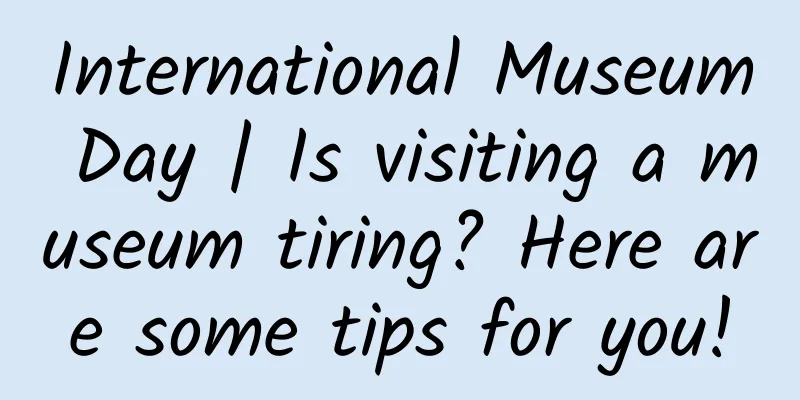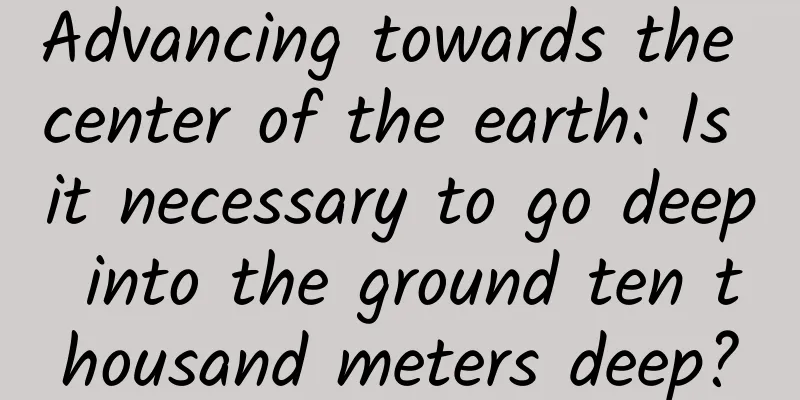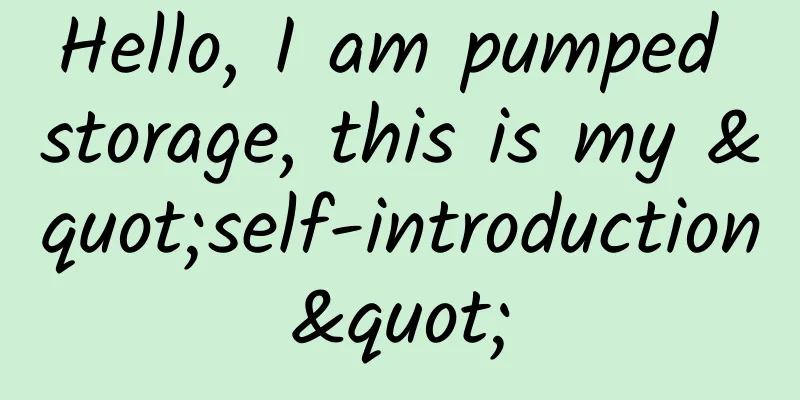International Museum Day | Is visiting a museum tiring? Here are some tips for you!

|
Today is International Museum Day. Have you visited a museum? Are you planning to visit a museum? Or are you currently visiting a museum? Have you ever had this experience: you made an appointment to visit a museum with great enthusiasm, but after you arrived at the museum, you felt very tired after just a short while, your feet and legs hurt, your concentration was scattered, and you even didn't want to look around anymore. Isn't that strange? You clearly wanted to visit the museum, but why did you feel tired after just a short while? Don’t worry, you might just be experiencing “museum fatigue.” On May 1, 2024, tourists lined up to enter the new building of Yinxu Museum in Anyang, Henan Province (Source: Xinhua News Agency) 01 What is museum fatigue? Museum fatigue refers to a state of physical or mental fatigue caused by experiencing exhibits in museums and similar cultural institutions . Physical manifestations include pain in the soles of the feet and swelling in the calves; psychological manifestations include irritability, even disgust, and the desire to leave. As early as 1916, Benjamin of the Boston Museum of Fine Arts proposed the concept of museum fatigue[1]. He believed that museum fatigue was mainly caused by the way museum exhibits were displayed . He proposed that museums should make improvements, such as: ▶ The cabinets should be taller to reduce the need to bend over; ▶ Flat or tabletop display cases should be narrower to reduce the effort of bending sideways. By improving the design of display cases and display methods, museums can more perfectly fulfill their dual functions as guardians and displayers of treasures. Folco et al. conducted a study on museum fatigue at the Florida Museum of Natural History in 1985. While observing visitors, the researchers noticed that visitors showed a high level of interest in everything in the museum for about 30 minutes , and then interest began to decline. In 1997, Beverly Serrell found in her research that visitors became disinterested in museums after less than 20 minutes .[2] On September 15, 2023, visitors viewed precious cultural relics at the China Archaeological Museum (Source: Xinhua News Agency) Museum fatigue can be further divided into physical fatigue and mental fatigue . Physical fatigue is caused by walking for a long time or trying to view exhibits or labels that are not in the right place . (This was already explained in the first description of museum fatigue.) Mental fatigue comes from paying close attention to exhibits for a long time . The factors related to museum fatigue are analyzed as follows: 02 Related factors causing museum fatigue 1. Saturation A concept often mentioned in museum fatigue is called "saturation". This usually happens when visitors start to feel bored with the next exhibit after viewing several similar exhibits in a row, and their attention and interest will decrease accordingly. In 2018, Camarero and Garrido found that [3] visitors who planned their own tour routes were less likely to feel saturated than those who followed a fixed route, and they were more satisfied with the way they chose to visit. Visitors who did not have any prior expectations of museum exhibits were also less likely to get bored quickly. In short, visitors who decided what to see and kept an open mind about the exhibits were more likely to enjoy the visit and less likely to feel tired. A rest area at the Wutaishan Museum in Shanxi (copyright image from the gallery; reprinting may lead to copyright disputes) 2. Limited attention capacity There are too many exhibits in a museum, but visitors have limited attention. Just like a mobile phone battery, visitors’ attention will slowly run out over time. As visitors look at exhibit after exhibit, their attention will gradually decrease, just like the battery power slowly decreasing. In addition, other factors such as loud noises, flashing lights, or talking to other visitors will also distract visitors, further reducing their attention to each exhibit[4]. Therefore, although there are many exhibits in a museum, visitors have limited attention and it is impossible for them to pay the same attention to each exhibit. 3. Decision-making process Visitors’ decision-making process changes as their museum visit progresses. As they spend more time in the museum, they become more selective in what they choose to see. They may only stop and look at certain exhibits[5]. This phenomenon may be related to physical fatigue, difficulty concentrating, or a feeling of being tired of seeing things. Poor museum design can also make visitors more likely to get tired , often because it exacerbates the fatigue factors listed above. If visitors encounter a poorly designed museum or exhibition, they may refuse to read any more information about the exhibits to avoid getting more tired. Of course, these factors that cause fatigue do not exist in isolation; they are so closely linked to each other that it is sometimes difficult to separate them. So, as tourists, how can we relieve museum fatigue? 03 How to relieve museum fatigue? 1. Plan your visit time properly : Visitors should plan their visit time properly according to their physical strength and interests, and avoid trying to see all the exhibits at once. They can choose to take breaks in the museum at different times , or spread their visit activities over several days . In addition, avoid going to the museum during peak hours to reduce the extra stress caused by crowds. 2. Use the auxiliary tools provided by the museum : Many museums provide audio guides, mobile applications or paper guide maps . Visitors can use these tools to plan their own visiting routes and choose exhibition areas of interest to explore in depth instead of wandering aimlessly. These tools can also provide detailed information on exhibits to help visitors better understand and appreciate the exhibits. On May 4, 2024, tourists viewed the gilded bronze bull at the Ningxia Museum (Source: Xinhua News Agency) 3. Participate in interactive and educational activities : Actively participate in the interactive experiences and educational activities provided by the museum, such as lectures, workshops or interactive exhibitions . These activities can not only provide a richer learning experience, but also effectively relieve the fatigue that may be caused by watching static exhibits for a long time. Through practice and participation, you can be more engaged and enjoy the visit process, thereby reducing fatigue. A visitor enjoys the fun of immersive visit on the interactive screen in the exhibition area of the National Museum of Archaeology . (Source: Xinhua News Agency) Of course, as a museum, appropriate improvements can also be made, such as optimizing the layout of exhibits, providing sufficient rest areas, and other measures can effectively alleviate museum fatigue. Finally, I hope everyone can gain a lot of knowledge and beautiful mood in the museum! References: [1] Gilman, Benjamin Ives (1916). "Museum Fatigue". The Scientific Monthly. 2 (1): 62–74. Bibcode:1916SciMo...2...62I. [2] Serrell, Beverly (1997). "Paying Attention: The Duration and Allocation of Visitors' Time in Museum Exhibitions". Curator: The Museum Journal. 40 (2): 108–125. doi:10.1111/j.2151-6952.1997.tb01292.x . ISSN 2151-6952. [3] Antón, Carmen; Camarero, Carmen; Garrido, María-José (2018-11-01). "A journey through the museum: Visit factors that prevent or further visitor satiation". Annals of Tourism Research. 73: 48–61. doi:10.1016/j.annals.2018.08.002 . ISSN 0160-7383. [4] Bitgood, Stephen; McKerchar, Todd L.; Dukes, Stephany (2013-07-01). "Looking Back at Melton: Gallery Density and Visitor Attention". Visitor Studies. 16 (2): 217–225. doi:10.1080/10645578.2013.827024 ISSN 1064-5578. [5] Rounds, Jay (2004). "Strategies for the Curiosity-Driven Museum Visitor". Curator: The Museum Journal. 47 (4): 389–412. doi:10.1111/j.2151-6952.2004.tb00135.x . Author: Yiyi, Master of Applied Psychology, University of Chinese Academy of Sciences Reviewer: Tang Yicheng, editor of the National Psychological Service Grassroots Collaboration Network, deputy secretary-general of the Psychology Popularization Working Committee of the Chinese Psychological Society Produced by: Science Popularization China Produced by: China Science and Technology Press Co., Ltd., China Science and Technology Publishing House (Beijing) Digital Media Co., Ltd. |
<<: Will 2023 be the hottest summer in the past 2,000 years? | Environmental News
Recommend
Weibo, Douyin, Kuaishou, Xiaohongshu KOL fans analysis report
1. Among the TOP-10,000 accounts on the four majo...
User operation: How to build a user points system?
This article mainly targets users in the growth/m...
When optics “meets” AI, will it become the “killer application” of 5G and 6G?
Computational optics can be understood as an opti...
#千万IP创科普# Prevent recurrence during season change, beware of these "dangerous minefields"|World Psoriasis Day
10.29 World Psoriasis Day As the autumn wind blow...
"National Breastfeeding Awareness Day", is breast milk no longer nutritious after 6 months?
Breastfeeding is the best choice for both babies ...
Coal shortage: is nuclear heating the answer?
Zhejiang Haiyan and Shandong Haiyang have complet...
With a little resources, I want to do too many things!
When a company or team has more resources, they c...
Former LinkedIn boss Zhang Ximeng: The era of using large amounts of money to buy traffic is gone!
Zhang Ximeng Silicon Valley big data analysis and...
The mystery of genetic exchange between East Asians and Denisovans was solved in the caves of the Qinghai-Tibet Plateau
Produced by: Science Popularization China Author:...
User operation: How to stimulate users’ desire to act?
Why do users want to use/participate/take action ...
How can the photography industry find the blue ocean of traffic on Douyin?
According to Guanyan Tianxia's "2020 Chi...
Use this free Sketch plugin to help you perfectly restore the Android interface!
Have you ever been overwhelmed by the "terri...
Analysis of advertising in the education and training industry from March to May
Due to the impact of delayed resumption of work, ...
The faster the speed, the weirder the behavior? Maybe there is a problem with the coordination function
As you age, do you have this problem: when you re...









